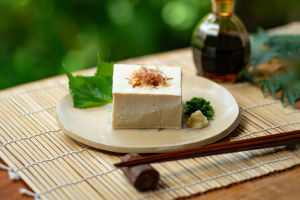Tangerines, a type of citrus fruit, are renowned for their distinctive flavor and rich nutritional profile.
Although they share similarities with other citrus fruits such as oranges and grapefruits, tangerines possess unique characteristics that set them apart in the fruit market.
The origins of tangerines can be traced back to ancient China, where the cultivation and consumption of this fruit began thousands of years ago.
As navigation technology advanced, tangerines spread to other regions and countries, eventually becoming a staple fruit worldwide. In various cultures, tangerines hold different symbolic meanings and uses, highlighting their significance in the global fruit market.
Compared to other citrus fruits like oranges and grapefruits, tangerines are smaller, typically ranging between 5 and 10 cm in diameter. Their skin is usually orange or yellow with a smooth, shiny surface, while the flesh is bright orange or yellow.
Tangerine flesh is known for being juicy and sweet, and its ease of peeling makes it a popular choice for a ready-to-eat fruit.
Nutritionally, tangerines are notable for their high vitamin C content, which is one of their most prominent features. Vitamin C is an essential nutrient that supports the immune system, enhances resistance to diseases, and offers antioxidant properties that may help slow the aging process.
In addition to vitamin C, tangerines contain a variety of minerals and vitamins, including fiber, vitamin A, potassium, and magnesium. These nutrients collectively aid in digestion, promote cardiovascular health, and support vision improvement.
Tangerines can be consumed in several ways. The most straightforward method is to eat them fresh, which is also the quickest and simplest option. They can also be used to make various beverages, such as tangerine juice or tangerine soda.
The sweet flavor and abundant juice of tangerines make them ideal for preparing desserts and dishes. For instance, tangerines can be used to make tangerine jam, tangerine preserves, and even tangerine-flavored ice cream or cakes. Additionally, tangerine peels can be utilized to create tangerine peel candy or tangerine-based spices.
Tangerine peels contain volatile oils, flavonoids, and other components that are thought to benefit the digestive and respiratory systems.
The cultivation and harvesting of tangerines require specialized knowledge and techniques. Tangerine trees thrive in warm, humid climates, particularly in subtropical and tropical regions.
Cultivating tangerines involves selecting appropriate soil, and ensuring regular watering and fertilization to promote growth and fruit quality. As tangerines mature, their fruit becomes fuller, and the peel color brightens.
Harvesting tangerines requires careful handling to prevent damage to the fruit. Generally, tangerines are picked by hand to ensure they reach consumers in optimal condition.
For storage, tangerines should be kept for no longer than necessary. Fresh tangerines should be stored in a cool, dry place and can typically be kept for one to two weeks at room temperature.
In cooler environments, their storage life can be extended, but excessive refrigeration might affect their taste and nutritional value. Therefore, when purchasing and storing tangerines, it is important to consider their freshness to ensure the best eating experience.
Tangerines have become a cherished fruit due to their unique flavor and substantial nutritional benefits. Whether enjoyed as part of a daily diet or during special occasions, tangerines offer a delightful taste and contribute to overall health.
Beyond being a delicious fruit, tangerines symbolize culture and tradition, underscoring the significant role of fruits in our global society.


